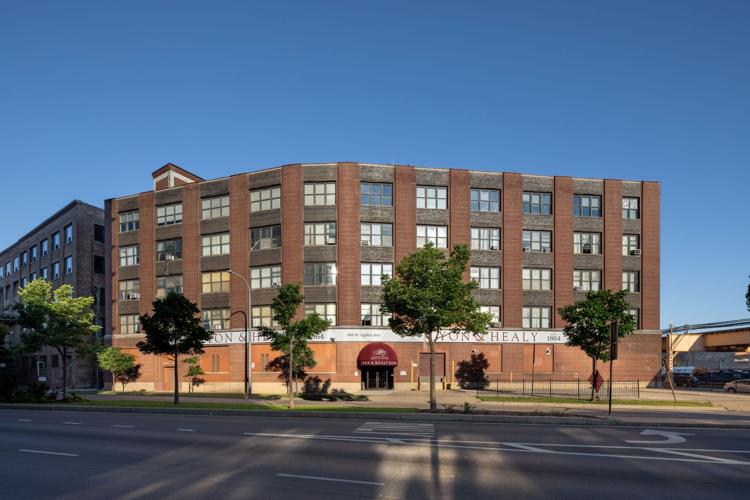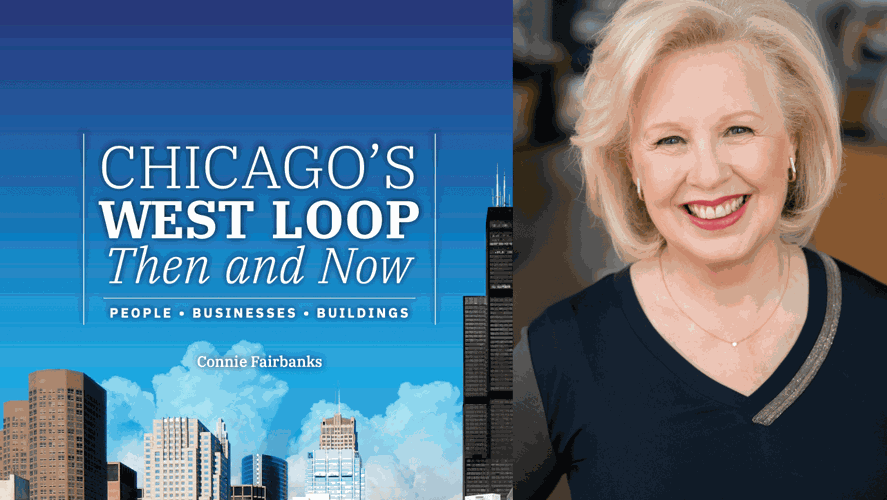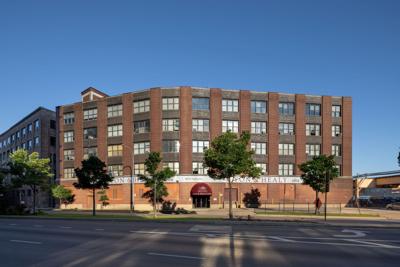Living in a dynamic city like Chicago, in a social media age where information is interpreted instantaneously, there are many stories of the past that are often forgotten or not shared from one generation to the next in this fast-paced and ever-changing world. In my recently released 245+ page book, "Chicago's West Loop, Then and Now," I share a collection of stories of the people, businesses, and buildings of this iconic historic neighborhood once known as The Near West Side of Chicago. And it's all based on my 5+ years of research, including 100+ interviews I conducted for my book. There are so many stories to learn from and reflect upon, so that's why I am excited to share a few excerpts of my book with you regarding businesses of this historic Chicago neighborhood.
Did you know the Near West Side was home to one of the largest garment districts in the US in the 1940s? Chicago was the center of the foundation area of the garment industry, with The Formfit Company making bras and girdles. Formfit survived The Depression by making uplift bras and more comfortable bras. In 1959, The Formfit Company hired Emilio Pucci to head up their luxury division. The same year, Formfit hired Arrow Sign Company to erect a 32-foot billboard on the Formfit building at Van Buren and Peoria. The billboard's design featured a woman clad in only a brassiere and girdle. However, they couldn't use flashing lights on the billboard so as not to cause accidents on the Eisenhower Expressway. Today women still purchase girdles to smooth their contours while trying to pack ten pounds of sugar into a five-pound bag.
In 1910, Hart Schaffner Marx was the largest clothing manufacturer in the US. (Chicago's garment industry was bigger than its meatpacking industry- use that stat to win your next Trivia night.) President Obama purchased HSM suits off the rack early in his political career. In 2009 he turned to HSM for his 2009 inauguration outfit, a custom-made topcoat, suit, and tuxedo.
In 1916, Oxxford, formerly on West Van Buren Street, applied their old-world craftsmanship to create finely tailored apparel with European fabrics. Over the years, their tailors hand-stitched suits for Clark Gable, George W. Bush, Joe DiMaggio, and others.

Author Connie Fairbanks' new book, Chicago's West Loop Then and Now, is a collection of stories about famous people and places in this popular area of Chicago.
There were major business machine inventions in The West Loop that are still making our lives easier.
Bet you didn't know that Joseph S. Duncan, CEO of Addressograph at Van Buren and Peoria, was frustrated by addressing 100 quote cards daily. So, he devised the addressing machine. In the early 20th Century, Addressograph machines became a modern business necessity allowing companies to quickly print a series of addresses on invoices, quotes, and envelopes. By 1910, Addressograph was helping Marshall Field & Company reach 100,000 customers per month. Perhaps, we can blame Mr. Duncan for the beginnings of junk mail.
Mr. Albert Blake Dick moved to Chicago as a lumberman in 1884, but soon grew tired of the drudgery of duplicating letters. Instead, he invented the copying machine in 1887 on West Jackson and Des Plaines. In 1904, Mr. Dick's copying machine could produce 50 copies per minute. The A.B. Dick Company remained a family business until it was sold in 1979. Mr. Dick's and Mr. Duncan's inventions make our lives easier today.
Printing and binding were also major businesses on Chicago's Near West Side. Near Monroe and Ashland, Barrett-Cravens Binding stopped binding books in the early 1930s and diversified to producing loose-leaf catalog binders and then to die cutting and finishing for the printing, publishing, paper doll, advertising, and greeting card industries.
Theodore Regensteiner emigrated to the US in 1884 in search of a better life. With the mind of an engineer and a love of solving problems and making money, he co-founded the Columbian Engraving Company in 1890. After the Columbian Exposition of 1893, he was impressed by the experimental color work in pamphlets and brochures at the Fair. Regensteiner developed and perfected three-color printing, and one of his first jobs was for The Ringling Brothers Circus. He went on to start the Regensteiner Colortype Company in 1907 on Racine between Jackson and Van Buren streets. This reinforced concrete building still exists today. By the mid-1960s, Regensteiner was one of the oldest and largest commercial color printing establishments in the US, printing millions of printed matter daily.
There were plenty of other businesses on The Near West Side of Chicago, including music, food, funeral supplies, bicycles, gears, brushes, feather dusters, and many small "mom and pop" businesses. With the help of women using their "attention to detail," tool-and-die companies made quality products for World War II.

Courtesy of Ever Restaurant
Today, Universal Overall finishes painting uniforms for factories in Detroit, we make toy prototypes, and we plate fasteners for Boeing, so they don't corrode. Lyon and Healy make some of the finest harps in the world by hand and have been doing just that since 1890 at the corner of Lake and Ogden Streets. The worldwide headquarters of McDonald's set up shop in The West Loop in 2018 in the area where The Oprah show had its start. Today, The West Loop is home to many award-winning restaurants, and we boast more than a dozen Michelin stars and Bib Gourmands.
To learn more about other businesses on The Near West Side of Chicago, read Chicago's West Loop, Then and Now (people, businesses, buildings), and learn more about Fairbanks' upcoming book events and where to purchase the book, please visit www.conniefairbanks.com.










(0) comments
Welcome to the discussion.
Log In
Keep it Clean. Please avoid obscene, vulgar, lewd, racist or sexually-oriented language.
PLEASE TURN OFF YOUR CAPS LOCK.
Don't Threaten. Threats of harming another person will not be tolerated.
Be Truthful. Don't knowingly lie about anyone or anything.
Be Nice. No racism, sexism or any sort of -ism that is degrading to another person.
Be Proactive. Use the 'Report' link on each comment to let us know of abusive posts.
Share with Us. We'd love to hear eyewitness accounts, the history behind an article.